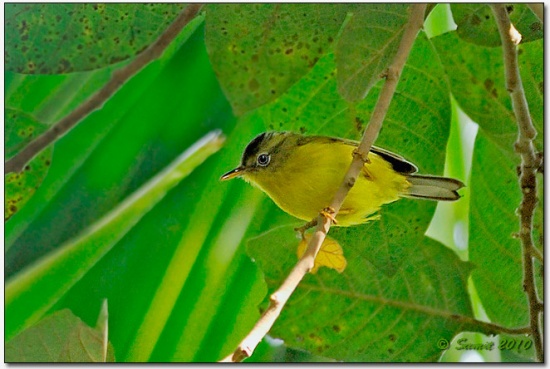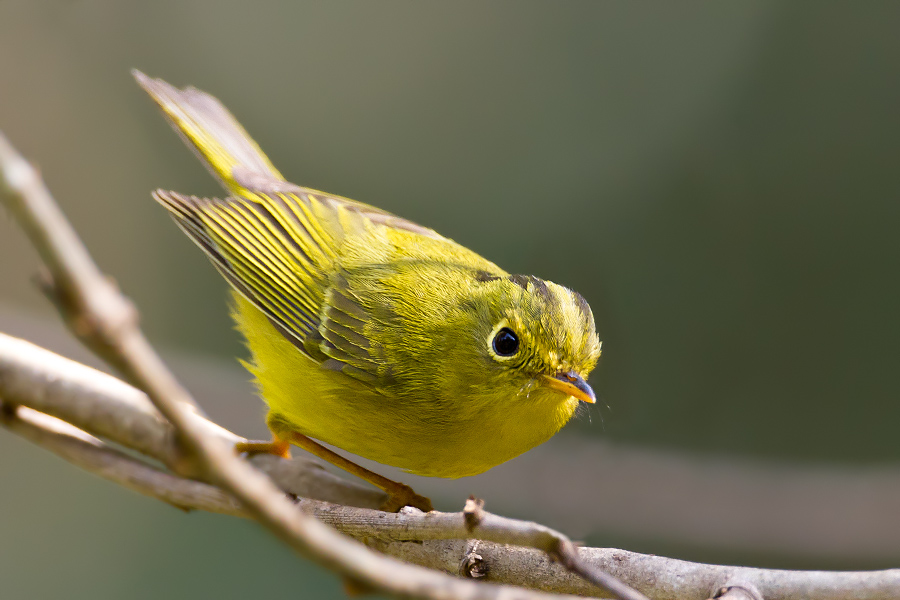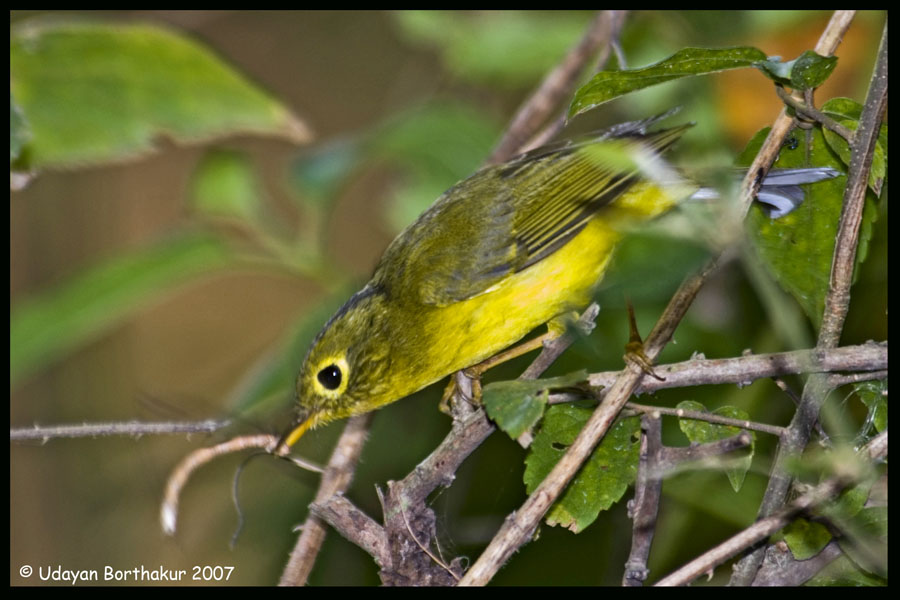
Seicercus burkii
SUBFAMILY
Sylviinae
TAXONOMY
Seicercus burkii Burton, 1836.
OTHER COMMON NAMES
English: Yellow-eyed flycatcher warbler; French: Pouillot de
Burke; German: Goldbrillen-Laubsдngerl Spanish: Curruca de
Burke.
PHYSICAL CHARACTERISTICS
3.9–4.7 in (10–12 cm); 0.2–0.3 oz (6–9 g). Small, plump warbler,
with bright green upperparts, bright yellow underparts, a
short, broad tail with white undertail feathers. Crown streaked
black and gray, eyering yellow; yellow wingbar.
DISTRIBUTION
Southern Asia, from India to south-central China to Thailand,
Cambodia and Vietnam.
HABITAT
Mid-level undergrowth of evergreen or mixed forest in highlands.
Winters at lower elevations.
BEHAVIOR
Usually solitary or in pairs. Rarely found in canopy. Song of
burkii is a loud, clear trill.
FEEDING ECOLOGY AND DIET
Insects. Often joins mixed-species flocks in non-breeding season.
REPRODUCTIVE BIOLOGY
Little known. Nest is ball of mosses, grass, and other plant
fibers, lined with moss and lichen, and concealed along a bank
or slope, often in tree roots. Four eggs are incubated by both
parents.
CONSERVATION STATUS
Not threatened.
SIGNIFICANCE TO HUMANS
None known.
Other popular Animals
Photo Gallery of - Golden-spectacled warbler




 Animalia Life
Animalia Life